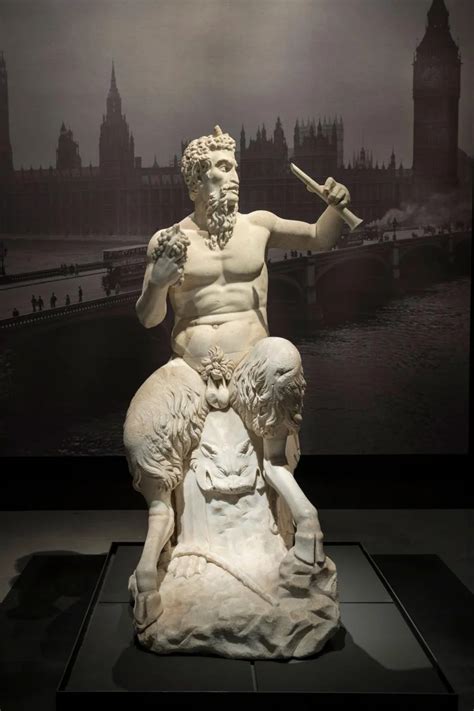pan greek god physical appearance|pan symbols greek god : 2024-10-07 Pan was a part man and part goat god, with horns, beard, and goat's feet. He played the panpipes, chased nymphs, and had a shrill shout that inspired panic. Upcoming events. Past events. See more
0 · rustic pan mythology
1 · picture of pan the god
2 · pan's domain in greek myth
3 · pan symbols greek god
4 · pan god of the wilds
5 · pan god of the wilderness
6 · hermes and pan
7 · greek god pan personality
LOUIS VUITTON Official USA site - Explore the World of Louis Vuitton, read our latest News, discover our Women's and Men's Collections and locate our Stores.
pan greek god physical appearance*******In ancient Greek religion and mythology, Pan is the god of the wild, shepherds and flocks, rustic music and impromptus, and companion of the nymphs. He has the hindquarters, legs, and horns of a goat, in the same manner as a faun or satyr. With his homeland in rustic Arcadia, he is also recognized as the god of fields, groves, wooded glens, and often affiliated with sex; because of this, Pan is co.
Pan was a part man and part goat god, with horns, beard, and goat's feet. He played the panpipes, chased nymphs, and had a shrill shout that inspired panic. Pan, in Greek mythology, a fertility deity, more or less bestial in form. He was associated by the Romans with Faunus. Originally an .Pan was the ancient Greek god of shepherds and hunters, and of the meadows and forests of the mountain wilds. His unseen presence aroused panic in those who traversed his .Physical Traits. Pan possesses a distinctive and unparalleled physical appearance. Typically depicted with the hindquarters, legs, and horns of a goat, his countenance . Pan’s visage is one of the most distinctive in Greek mythology. Unlike the majority of Olympian gods, who often embody human perfection, Pan appears as a fusion of man and beast. His upper .
Overview. Rustic Pan was the Greek god of shepherds, goatherds, and their animals and pastures. He himself was part-animal and was most often imagined .
The commonly held believe in ancient Greek religion and mythology is that Pan is the son of the Greek god Hermes.Known as the youngest of the Twelve Olympians, Hermes is the messenger of the .
Pan was a God of All Things. The name Pan probably derives from a very ancient word that also gave us the root for pasture. But the Greeks saw Pan in a much broader way. The word pan in Greek .
Pan is an Arcadia character in Greek Mythology. He made his début in around seven hundred BCE on Homer's: The Iliad and ends around the ninth century. His next appearance will be in the novel "Strange Case". . Learn about Pan, the Greek god of nature, shepherds, and rustic music, known for his wild spirit. . Appearance: Half-man, half-goat with horns, goat legs, and a beard: . These art pieces not only highlight Pan’s physical features, like his goat-like legs and horns, but also his role in myths. Here is a table with some notable artworks .Explore the enchanting world of Pan in Greek mythology, the whimsical god of the wild, shepherds, and rustic music. Dive into his legendary tales! Pan was the Greek god of shepherds, hunters, and the untamed wilderness. In ancient Greek art, he was often depicted as a horned man with the legs of a goat; he was the chief of the satyrs, who . Most Greek gods were only described in vague terms by writers of the time. Because Greek writers put little emphasis on physical descriptions, most of our knowledge of what the gods looked like comes from the interpretations of artists. These images are usually standardized depictions of the physical ideals that the Greeks held to be beautiful.
This unique physical appearance symbolized the union of the human and animal realms, suggesting a deeper connection between mankind and the untamed forces of nature. The God of the Wild. . As we conclude our exploration of Pan, the Greek god of the wild, we are reminded of the deep connection between the ancient myths and the . This association is a direct reflection of Pan’s characteristics, with his lower body depicted as that of a goat, complete with fur, hooves, and horns. The goat represents not only Pan’s physical form, but also his primal, unrestrained nature. Goats were often used in sacrificial offerings to gods, including Pan, reinforcing this symbol.
Echo, in Greek mythology, a mountain nymph, or oread. Ovid’s Metamorphoses, Book III, relates that Echo offended the goddess Hera by keeping her in conversation, thus preventing her from spying on one of Zeus’ amours.To punish Echo, Hera deprived her of speech, except for the ability to repeat the last words of another. Echo’s hopeless love .

Classical literature offers only a few, brief descriptions of the physical characteristics of the gods. Homeric Hymn 7 to Dionysus 1 ff (trans. Evelyn-White) (Greek epic C7th to 4th B.C.) : "He [Dionysos] appeared on a jutting headland by the shore of the fruitless sea, seeming like a stripling in the first flush of manhood: his rich, dark hair .
pan greek god physical appearance pan symbols greek god Pan, the Greek god of the wild and rustic music, was often depicted with various symbols in ancient art and mythology. One of the most commonly associated symbols with Pan is the pan flute, also known as the syrinx. . Pan Physical Appearance. Pan is a major god in Greek mythology, and he is the most important of all the gods . A Guide to the Greek God Pan Pan in Greek Mythology Pan in Neo-Platonic and Early Christian Philosophy Pan and Satan . Some of these characteristics, like his sea-god appearance, even perplexed Classical Greek authors, implying that his origin legend was so old that it had been lost to time by the 5th Century BCE.Classical literature offers only a few, brief descriptions of the physical characteristics of the gods. Homer, Iliad 3. 396 ff (trans. Lattimore) (Greek epic C8th B.C.) : "She [Helene of Troy] recognized the round, sweet throat of the goddess [Aphrodite] and her desirable breasts and her eyes that were full of shining."
Classical literature offers only a few, brief descriptions of the physical characteristics of the gods. Homeric Hymn 7 to Dionysus 1 ff (trans. Evelyn-White) (Greek epic C7th to 4th B.C.) : "He [Dionysos] appeared .

Pan, the Greek god of the wild and rustic music, was often depicted with various symbols in ancient art and mythology. One of the most commonly associated symbols with Pan is the pan flute, also . A Guide to the Greek God Pan Pan in Greek Mythology Pan in Neo-Platonic and Early Christian Philosophy Pan and Satan . Some of these characteristics, like his sea-god appearance, even .Aphrodite riding goose, Athenian red-figure kylix C5th B.C., British Museum APHRODITE was the Olympian goddess of love, beauty, pleasure and procreation. She was depicted as a beautiful woman often accompanied by the winged godling Eros (Love). Her attributes included a dove, apple, scallop shell and mirror. Name and Etymology. The name Hermes is most likely derived from the Greek word herma (ἕρμα), which signified the stone heap.A close approximation is the Indo-European root *ser-, meaning to put together, to bind.Some scholars suggested that the name may also be of Pre-Greek origin, or an older form meaning “cairn”.Some even .Hermes was the ancient Greek god of herds and flocks, travellers and hospitality, roads and trade, thievery and cunning, heralds and diplomacy, language and writing, athletic contests and gymnasiums. He was also the herald Zeus, king of the gods. Hermes was depicted as either a handsome and athletic, beardless youth, or as an older bearded .Even among the vast and diverse pantheon of Greek mythology, Pan stands as a unique figure. While the Olympians tend towards symbolizing very human virtues, concepts and talents - music, marriage, war, wisdom, etc, Pan embodies the untamed wilderness and all the primal forces of nature. Pan Greek God Greek Mythology Pan Mythology Arcadia .Enter the wild, bucolic world of Pan, the half-man, half-goat deity who reigns over nature and watches over shepherds. A native of Greek mythology, Pan is known for his goat-like feet, his melodious flute and his presence in the wooded mountains of Arcadia. Let's lift the veil of foliage to discover the influence and symbolism of this ancient figure, still relevant .Apollo was the ancient Greek god of prophecy and oracles, music, song and poetry, archery, healing, plague and disease, and the protection of the young. He was depicted as a handsome, beardless youth with long hair and attributes such as a wreath and branch of laurel, bow and quiver of arrows, raven, and lyre.
PAN Pan was the Greek god of nature. He was a man from waist up except for pointy ears at the top of his head and shaggy hair around his face. . When Pan was born and his mother saw him for the first time, she screamed and ran away because he was so strange-looking. Hermes, however, was pleased with his son's odd appearance and took him up .This musical instrument is better known by the name Pan's flute, in honor of the god himself. Pan would have been one of Zeus' children with his wet nurse, the goat Amalthea. His great love however was Selene, the moon. In an Egyptian version, Pan was with other gods on the banks of the Nile River and Typhon, the enemy of the gods, appeared. PAN. PAN is a Greek god whose name, of Indo-European derivation, means "shepherd" (cf. Latin pastor).In appearance, he has the hooves, tail, hair, and head of a goat and the erect posture, upper body, and hands of a man. He is frequently depicted holding either a lagobolon, a kind of shepherd's crook used for hunting rabbits and .Pan’s physical appearance underwent many changes over time. In his earliest representations, dating from the 6th–5th century BCE, the goat-god was depicted simply as a goat walking on its hind legs, piping merrily, dancing, and sometimes with a prominent phallus. . In ancient Greek art and mythology, Pan was often depicted as part of the .Pan had the face of a human, except for the goat’s horn on the top of his head. Unlike other Greek gods, Pan was not the most handsome of gods with an average appearance. Pan’s face had its share of wrinkles and he had a pointy and prominent chin. This caused some problems for Pan in life. Pan Got Started in the Country. Pan was not a city god.Pã (Greek: Πάν, transl. Pann), in Greek mythology, is the god of the woods, fields, flocks, and shepherds. He lives in caves and roams the valleys and mountains, hunting or dancing with the nymphs. He is depicted with ears, horns, and goat legs, a lover of music, and always carries a flute. He is feared by all those whpan greek god physical appearance PAN. PAN is a Greek god whose name, of Indo-European derivation, means "shepherd" (cf. Latin pastor).In appearance, he has the hooves, tail, hair, and head of a goat and the erect posture, upper body, and hands of a man. He is frequently depicted holding either a lagobolon, a kind of shepherd's crook used for hunting rabbits and .pan symbols greek godPan’s physical appearance underwent many changes over time. In his earliest representations, dating from the 6th–5th century BCE, the goat-god was depicted simply as a goat walking on its hind legs, piping merrily, .Pan had the face of a human, except for the goat’s horn on the top of his head. Unlike other Greek gods, Pan was not the most handsome of gods with an average appearance. Pan’s face had its share of wrinkles and he had a pointy and prominent chin. This caused some problems for Pan in life. Pan Got Started in the Country. Pan was not a city god.Demeter was the ancient Greek goddess of agriculture, grain and bread who sustained mankind with the earth's rich bounty. . PHYSICAL DESCRIPTIONS OF DEMETER. Classical Greek literature offers only a few, brief descriptions of the physical characteristics of the gods. Homeric Hymn 2 to Demeter 40 ff (trans. Evelyn-White) .
Physical Features: Pan has the hind-quarters of a goat, pointed ears, and two small horns on his head. Height: Unrevealed (5' 10"; by approximation) Weight: Unrevealed Eyes: Unrevealed Hair: White. History: (Greek-Roman Myth) - Pan is the son of Hermes, the god of messengers and thieves. His mother is generally unrevealed because his appearance . Pan was the Greek God of shepherds, hunters, and rustic music. He was often depicted as a satyr, a creature with the upper body of a human and the lower body of a goat, and was asAphrodite (/ ˌ æ f r ə ˈ d aɪ t iː / ⓘ, AF-rə-DY-tee) [4] is an ancient Greek goddess associated with love, lust, beauty, pleasure, passion, procreation, and as her syncretized Roman goddess counterpart Venus, desire, sex, fertility, prosperity, and victory.Aphrodite's major symbols include seashells, myrtles, roses, doves, sparrows, . This story is well-known, but is it really an ancient Greek legend. The story of Echo might not be as rooted in Greek mythology as many people think! How Echo Lost Her Voice. According to Ovid, Echo was an Oread, or mountain nymph. She was well-known among the gods for her love of conversation. Echo would start a conversation .Apollo is the Olympian god of light, music and poetry, healing and plagues, prophecy and knowledge, order and beauty, archery and agriculture. An embodiment of the Hellenic ideal of kalokagathia, he is harmony, reason and moderation personified, a perfect blend of physical superiority and moral virtue.A complex deity who turns up in art and literature .
Region/Culture: Greece, Mesopotamia and Ancient Near East Mythos: Greek Mythology Primary Type/Nature: Gods and Deities Mythical Attributes: Pan is the god of the wild, shepherds, and flocks, known for his half-human, half-goat form. Role in Mythos: He is a companion of the nymphs and symbolizes the untamed aspects of nature. Relation to .
Symbols associated with Pan are: woods. pastures and the syrinx (a type of flute). The words "paning" and "pan tard" both contribute from his name. Some Christians view Pan as Satan. In Roman mythology, Pan is referred to as Faunus. There are three different origin stories which explain the birth of Pan. In the first, Pan is the son of Zeus and .
NEW CIV VI LEADERS NOW ON CONSOLES! LEARN MORE. Sid Meier's Civilization VI - New Player Quick Guide. LEARN MORE. ADD JULIUS CAESAR AND SCOUT CAT TO CIVILIZATION VI* LEARN MORE. 2016: Civilization VI introduces new ways to engage with your world.
pan greek god physical appearance|pan symbols greek god














